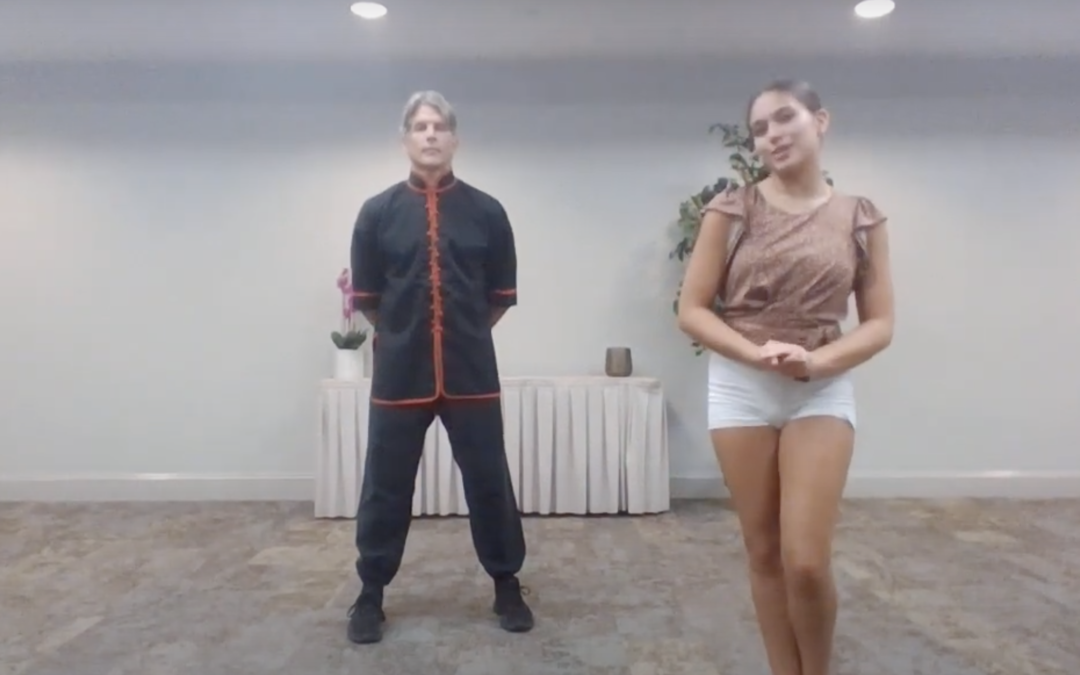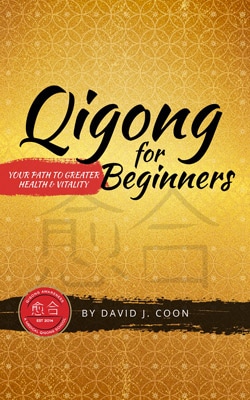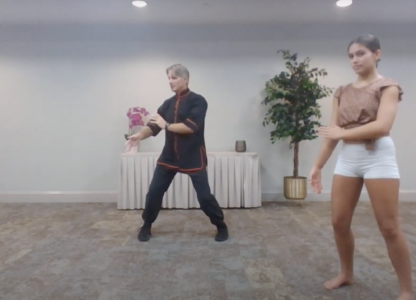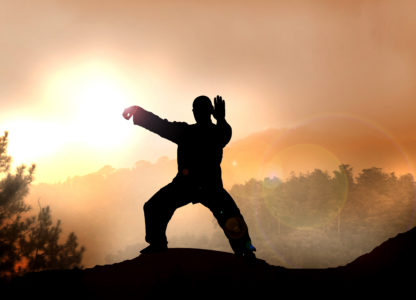In a previous post, we talked about how Qigong is the practice of cultivating qi (or life energy), involving a combination of meditation, visualization, physical movements, and breathing exercises. But within Qigong, there are many different styles of practice. Some exercises emphasize stillness and meditation, for example, while others emphasize physical form. Another type, called Medical Qigong, is a type of Eastern medicine rather than simply a physical exercise practice.
With origins in ancient China, Qigong has been practiced for thousands of years. Throughout history, it has evolved in many different ways with thousands of variations of Qigong forms that are thought to exist today. It is nearly impossible to identify every single variation, but generally, Qigong falls into a few larger categories that may be helpful to know as you practice.
What are the different types of Qigong? Medical Qigong, Spiritual Qigong, & Martial Qigong
Scholars and masters often categorize Qigong exercise into three categories: Medical Qigong, Spiritual Qigong, & Martial Qigong. While they all concern the cultivation of energy, Medical Qigong focuses on both preventative and curative medicine, therefore emphasizing the health, vitality, and longevity of the body. Spiritual Qigong focuses more on spiritual energy cultivation through sitting, stillness, and visualization rather than the physical movements, and is associated with yin (or “passive”) energy. This is sometimes associated with the Nei Dan (or Internal Elixir). Martial Qigong focuses more on physical movement and form and is associated with yang (or “active”) energy. This is also sometimes associated with an alchemy called the Wei Dan (or External Elixir). Tai Chi, one of the most popular forms of Qigong around the world, is a good example of Martial Qigong.
Martial Qigong is sometimes referred to as “active Qigong” and Spiritual Qigong as “passive Qigong.” However, it is important to note that both exercises involve active mindfulness. In Martial Qigong, you meditate as you focus on physical exercises, and similarly, in Spiritual Qigong, you actively focus on breath and visualization, even if your body is still. Often, a Qigong exercise incorporates many of these elements together, transitioning from moving meditations to still meditations.
Medical Qigong
There are two different applications of Medical Qigong. One application of Medical Qigong is the treatment of health conditions by a skilled practitioner. The practitioner helps rebalance the patient’s energy field, hormones, and overall nervous system. Like Acupuncture, it is a branch of Traditional Chinese Medicine, and assists those with a range of medical needs, from depression to spinal disease to joint pain. The second application of Medical Qigong involves specific preventative and prescriptive Qigong exercises to facilitate healing in the body.
What are the five elements in Qigong?
The five fundamental elements of Qi are elements from nature: Wood, Fire, Earth, Metal, and Water. The composition of our bodies are thought to reflect these elements, and some forms of Qigong are practiced by channeling them. Each natural element corresponds to a different organ in the body: Wood with our Livers, Fire with our Hearts, Earth with our Spleens, Metal with our Lungs, and Water with our Kidneys. Focusing our attention on these elements helps tune into our organ functions and energy pathways as we harness our life force.
Are the five elements the same as energy centers?
No, the five elements (see above) are not the same as energy centers. The main energy centers in the body are called chakras and dantians. Chakra teachings have been shared by different traditions from India, China, and Tibet. Dantians considered to be elixir fields are energy centers separate from but connected to the Chakras. Daoist Qigong practice typically emphasizes the Dantians and their associated elixir fields whereas Yoga typically emphasizes the Chakra System. However, Chakras are also part of certain types of Medical Qigong and are utilized in various treatment protocols.
What are examples of specific types of Qigong?
Tai Chi is the most popular form of Qigong. It tends to emphasize physical form rather than visualization or still meditation and follows particular sequences. Because of this, Tai Chi is a good example of Martial Qigong. If you’re interested in reading more about the differences between Tai Chi and other kinds of Qigong, check out our blog post here.
The second most popular form of Qigong practiced worldwide is the Eight Brocades, also known as the Eight Silken Movements. As the name suggests, the exercise consists of eight different movements, each focusing on different energy pathways of the body.
Another example of a popular form of Qigong would be the microcosmic orbit exercise, which can be practiced sitting down or standing. It is a still meditation, visualization, and breathing exercise that is a good example of Spiritual Qigong.
The importance of breath work
Whether you seek a moving or still meditation, your breath is one of the most important means for channeling and cultivating Qi. Your breath helps energy flow through different pathways in your body and is the key to a practice of active mindfulness. Different kinds of breathing may be practiced for different Qigong exercises. For example, using the sound of shh while exhaling can be used to disperse Liver Qi Stagnation. Breathing slowly through the nose and holding the breath in the lower belly can be used to charge the body’s batteries (Dantians). Your breath, along with the type of Qigong exercise you choose, will have different effects on relaxation and mood. Regardless of what kind of Qigong practice you choose, you will experience a range of benefits. We recommend you try different classes out!
See David and Bella Explain the Different Styles of Qigong
Check Out our Upcoming WeiQi Medical Qigong Webinar
See Our Upcoming Free Events
See Our YouTube Channel for More Guidance







